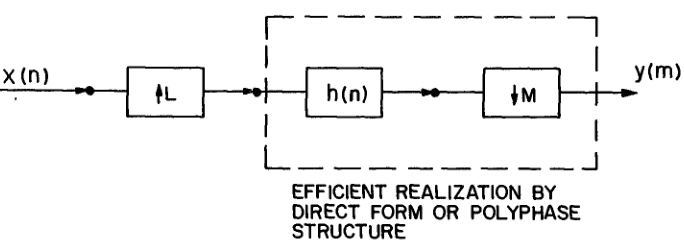I have a signal affected by Doppler effect. In general, the Doppler effect changes the scale of the time and frequency domains. So, to undo this phenomenon, I am using a sampling rate converter. Two possible implementations using polyphase structures are shown in Figures 1 and 2. They both work fine as expected. The recovered signal has no Doppler shift.

 .
.
However, while in presence of dynamic Doppler, i.e. the compression/expansion factor varies over time, I am not sure if this solution is appropriate. I am buffering the signal, and for each buffer I compute the corresponding $L$ and $M$ factors that undo the Doppler effect. Nevertheless, there exists a trade-off between buffer length and the frequency resolution. In other words, in a buffer I still have a varying Doppler shift, so the $L/M$ ratio should not be a constant during a single buffer.
Is there a way of apply a sample-to-sample method to undo dynamic Doppler effect? I am currently interested in software-based solutions, not hardware-based ones. For example, in hardware I would dynamically modify the sampling rate. What about in software? How can I dynamically modify the sampling rate?
References:
Both figures were taken from:
R. E. Crochiere and L. R. Rabiner, Multirate Digital Signal Processing. Englewood Cliffs, NJ: Prentice-Hall, 1983
